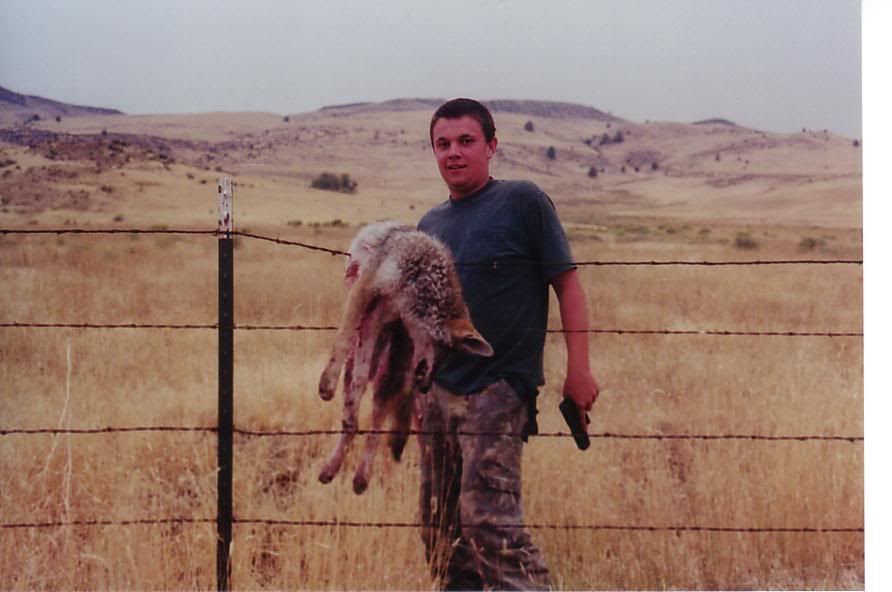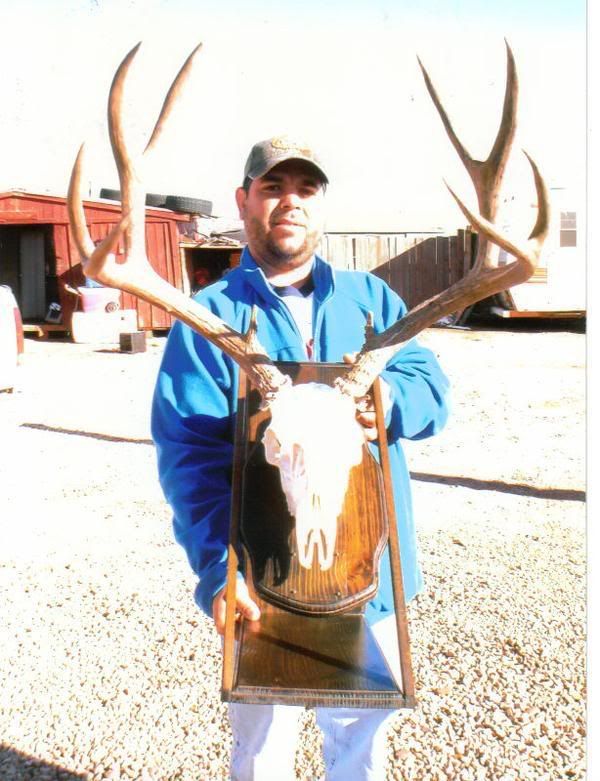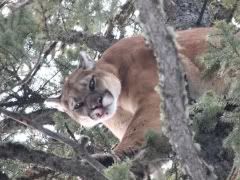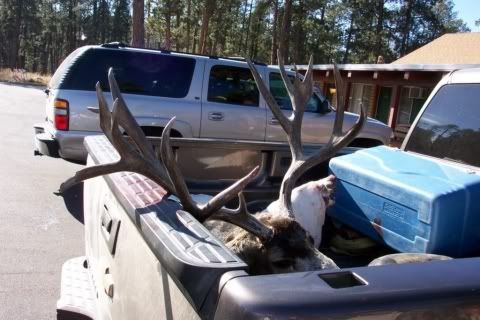The Legislature and Governor’s Office swept $7,560,695 from the Arizona Game & Fish Department (AGFD) to balance the 2008 budget deficit. The funding sweeps included $4,732,700 from the Watercraft License Fund, $395,000 from Off Highway Vehicle Recreation Fund and $2,827,600 from the Game and Fish Fund (La Osa Sheep Settlement money). In addition, another $5,600,000 ( $1,500,000 from the Off-highway Vehicle Recreation Fund and $4,100,000 from the State Lake Improvement Fund) were swept from the State Parks Department.
The Legislature is now struggling with an enormous budget deficit for 2009 estimated to be in the range of $2.2 to $2.5 Billion. Where will the money come from? That is the $64 question.
Arizona’s sportsmen feel strongly that “No Money be Swept from the Arizona Game & Fish Department”. Why should these funds be held harmless? First and foremost, AGFD monies are not general fund money. The primary source of AGFD funds is sportsmen’s dollars. Except for $10 Million annually from Heritage Fund (funding source for Heritage Fund is Lottery Revenues); $7-8 Million annually in Wildlife Conservation Funds (funding source is the Indian Gaming Initiative) and $300,000 from the Non-game Fund (Source is an income tax check-off) virtually all other AGFD money comes directly from sportsmen’s pocketbooks through license and permit fees, sure charges, and excise tax on hunting and fishing equipment and ammunition.
Aproximately 80% of AGFD’s revenue in any given year is generated by sportsmen. Sportsmen have time and again asked the legislature to increase the fees that they pay. The Joint Legislative Budget Committee estimated that the most recent fee increase in 2005 would yield a 30% increase in revenues to the AGFD by 2009. A similar amount was generated from the previous fee increase in 1999. And these fee increases were not easy to obtain as both increases required a super majority vote of the legislature.
Sportsmen know just how difficult it is to get the state to repay swept funds for Arizona’s wildlife. In 2006, AZSFW asked the Legislature to repay $15 million in funds that had been swept over the prior four years. Mind you this was a time when the state was flush with dollars and voted to increase their total budget expenditures by approximately 9%. After an aggressive campaign, AZSFW felt fortunate to obtain a general fund appropriation of $3.5 million for critical wildlife habitat projects.
It is time for the Legislature to stand tall and cut general fund programs and require that general fund agencies live within their means rather than stealing money from agencies that do not receive dedicated non-general fund revenue dollars.
Sportsmen are asking the Arizona Game & Fish Commission to support them in their effort to keep AGFD funds from being swept. While the Commission has been asked twice to pass a motion opposing all game & fish fund sweeps, they have yet to act on this important issue.
Sportsmen’s groups including Arizona Sportsmen for Wildlife, Wildlife Conservation Council, National Rifle Association-ILA, Arizona Wildlife Federation, Arizona Deer Association, Arizona Elk Society, Arizona Desert Bighorn Sheep Society, Arizona Antelope Foundation, Anglers United, Arizona Chapter Safari Club International, Arizona Flycasters Club, Arizona Bowhunter’s Association, Christian Bowhunter’s Association, Arizona Trappers Association, Yuma Valley Rod & Gun Club, Navajo County Sportsmen’s Club, Southeastern Arizona Sportsmen’s Club, Southern Arizona Sportsmen’s Alliance, Mohave Sportsmen’s Club, Arizona Predator Callers, Southern Arizona Wildlife Callers and Xtreme Predator Callers LLC have all signed onto the petition.
Arizona’s wildlife does not have a voice at the Legislature or the Governor’s Office. It is only through sportsmen that the case for wildlife can be voiced. With drought conditions and habitat reduction it is imperative that Sportsmen advocate for wildlife. The Arizona Game & Fish Commission should also advocate on behalf of wildlife by strongly opposing all sweeps of AGFD revenue. Failure to do so brings into question a legitimate concern that must be answered. Is the Arizona Game & Fish Commission fulfilling its fiduciary duty to protect and maintain Arizona’s wildlife and its habitat?
Not only must the Commission do its part, sportsmen must act today to save wildlife dollars from being swept. You can help by contacting your legislator and the Governor’s Office and asking them not to sweep any Arizona Game & Fish Department funds. Ask them to hold general fund agencies accountable and not allow them to steal wildlife dollars. Your help is needed today. To find out how you can help click here.
—————————————
Arizona Game and Fish Commission concerned that proposed legislation could impede wildlife management, bring lawsuits
PHOENIX — The Arizona Game and Fish Commission has expressed concern to House Concurrent Resolution 2037, a proposed amendment that would create a new constitutional right to hunt and fish in Arizona.
The Game and Fish Commission voted on Feb. 21 to oppose the bill as written, after a legal review by the Attorney General’s office advised that elevating hunting and fishing to a constitutional right could potentially hurt the state’s ability to enforce wildlife laws or take wildlife management actions, and could open the door to lawsuits from individuals who feel their rights to hunt and fish have been adversely affected.
“We understand the desire of the bill’s supporters to protect the ability of people to hunt and fish in Arizona into the future,” said Commission Chairman William McLean. “While the concept sounds appealing on the surface, the language of this bill as currently written could contain many pitfalls for wildlife management and law enforcement.”
The commission and the bill’s supporters worked extensively over the past week in an attempt to reach a compromise on the bill’s wording. But in a public commission meeting on Monday, the sides could not come to an agreement.
“Both sides made a diligent, good-faith effort to try to arrive at language that would satisfy the bill’s supporters and alleviate our concerns, but in the end, we couldn’t arrive at mutually acceptable language,” said McLean.
Under current Arizona law, hunting and fishing are considered privileges, not constitutional rights. Making them constitutional rights could subject Game and Fish laws and regulations to a more stringent legal standard and increase disputes over whether those laws and regulations overly restrict someone’s right to fish and hunt.
As an example, certain laws that regulate hunting and fishing, as well as the commission’s decisions to revoke a person’s hunting and fishing license privileges, would likely be subject to a strict scrutiny standard because they would interfere with a person’s constitutional right to hunt and fish.
Yet another example, the commission is likely to face more legal challenges to its decisions on matters such as issuing a certain number of big game tags, establishing bag limits, and closing or limiting access to certain areas to protect wildlife habitat or benefit protected species, because these actions might interfere with the constitutional right to hunt and fish.
“In addition to the high expense of defending the lawsuits, the State could potentially face large damage awards, injunctions blocking the enforcement of hunt orders, challenges to road or land closures protecting wildlife habitat, court decisions declaring state wildlife laws unconstitutional, reversal of criminal convictions and revocation orders on constitutional grounds, and above all, the diversion of vital agency resources to defend the litigation instead of managing wildlife,” said McLean.
The bill passed through the House Committee on Natural Resources and Public Safety yesterday by a 6-3 vote (and one committee member voting as present).
If ultimately approved by the Legislature, HCR 2037 would go to voters as a ballot referendum this fall.
Mule Deer Fanatic
Bringing the Mule Deer world together, one hunter at a time
Archive for category Arizona Mule Deer Hunting
Money stolen from Arizona Game and Fish
It won’t be long now
August is upon us. The first opportunity to go after the monster mulies is nigh. Did you get a tag? Nowadays it can be harder, much harder to get a tag than to get a trophy buck (once you have the tag, of course).
 If you are like me, you have applied for all the tags you can afford in either time or money. I applied for mule deer tags in five states, along with elk, moose, antelope, turkey, and javelina. So far, the only tag I’ve obtained is a turkey tag.
If you are like me, you have applied for all the tags you can afford in either time or money. I applied for mule deer tags in five states, along with elk, moose, antelope, turkey, and javelina. So far, the only tag I’ve obtained is a turkey tag.
My old standby, has been Arizona over-the-counter archery deer. As of this year, Arizona has messed that up. I can get an archery tag but not for a good unit.
Utah archery deer has also been a last-ditch opportunity. The archery tags sold out quite early this year – sooner than I was willing to commit. With surrounding states reducing mule deer hunting opportunity, Utah will have more demand for their over-the-counter tags.
 Get out the bow if you haven’t already. The hunt will be here before you can blink. Get in shape, if you need to do that. Take a crash course. Buy your hunting grub in bulk. It will save you money.
Get out the bow if you haven’t already. The hunt will be here before you can blink. Get in shape, if you need to do that. Take a crash course. Buy your hunting grub in bulk. It will save you money.
Best of luck to you in 2008 and, as always
May the Force be with you.

Arizona lions

FLAGSTAFF, Ariz. — While mountain lion hunting in Colorado can be quite good, if the idea of hiking for miles through knee-deep snow doesn’t appeal to you, consider a trek across the border and south, into Arizona, for a horseback ride into cougar country.
The Arizona Game & Fish Department estimates the state’s mountain lion population at around 2,500. Lions are present throughout the entire state, with the exception of the very southwest corner.
The most popular game management unit for lions is the famous 12A south unit, in the Kaibab National Forest north of Flagstaff.
Other lion-heavy areas include units 22, 23, 24A (north and east of Phoenix), and units 27, 28 and 31 east and north of Tucson, which includes the Blue Wilderness Area.
Good go-to advice
According to a current research project being conducted by AZGFD, the lion’s primary habitat in the state appears to be principally in timbered areas, particularly in units populated by stands of chaparral and ponderosa pine.
Mountain lions tend to follow the deer herds to some extent, but will also hunt other game animals including elk.
Due to the drought Arizona has faced over the past years, the mule deer population is down, whitetail deer populations have remained stable, and javelina populations are down. But at 2,500 lions, the lion population in Arizona is relatively healthy.
When to hunt
With the exception of special units closed to hunting, and units closed during certain times of the year (be sure to consult the 2005-2006 Arizona Hunting Regulations brochure), lion season is open year-round. But lions are generally hunted in the winter months (October through April) due to the moisture that helps the dogs pick up scent, and because of milder temperatures for hunters (and dogs).
Of special interest to lion hunters is Arizona’s regulation allowing a hunter to harvest a lion a day in certain game management units, until the harvest objective has been met.
After that, the limit reverts back to one lion per year (and none of the previous lions harvested count against the one per year limit).
The reason for this allowance is that AZGFD is attempting to protect transplanted bighorn sheep in certain GMUs.
Hunters can call (877) 438-0447 for up-to-date info on open units.
License info
Nonresidents may purchase a mountain lion tag over-the-counter (called a “non-permit” tag) for $200, in addition to needing a nonresident hunting license.
Hunters must contact AZGFD within 20 days of harvest, and must provide a sample tooth of any harvested lions.
Go guided
If you hire a guide, be sure to ask if his dogs are “dry land” lion dogs. These specially trained dogs are more adept lion trackers than the “damps,” or wet ground dogs.
The going rate for a lion hunt is around $3,500, with hunts usually organized into 4-day or 8-day ventures.
Contact information
Arizona Game & Fish Department (602-942-3000)
Pat Barber, predator and furbearer biologist (602-789-3354)Guides and outfitters
Outdoorsman’s (602-944-7121)
Bedlion Outfitters (928-526-5993)
Arizona Lion Hunts (623-386-0102)
Arizona Wildlife Outfitters (928-681-4867)
By Jim Smith
Fishing and Hunting News
February 15, 2006,
Expansion of Mexican Gray Wolves in Arizona
The Arizona Deer Association is organizing an effort to prevent further wolf expansion in the state of Arizona. Please lend your support.
—————————————–
The wolf people, including groups like the Humane Society of the United States, PETA, the Sierra Club, and Defenders of Wildlife, want to do away with Elk and Deer hunting, want to expand the wolf population in Arizona to include all Elk and Deer habitat across the central part of the state as well as north of the Grand Canyon. The maps they are using overlay, almost perfectly, all the Elk and Deer habitat in the state. These groups will stop at nothing and have authored many articles without telling the whole story and consequences of expanding the wolf recovery range. Look how long it took Montana, Wyoming and Idaho to begin hunting wolves and now they are back in court spending millions of dollars fighting the wolf people that want the hunting to stop, even though, from the beginning it was always part of the recovery plan. We don’t need this in Arizona.
Please take a few minutes and protect our Elk and Deer hunting here in Arizona.
Send an email to mexwolf@azgfd.gov or mail it to Mexican Wolf Project, Attn: Terry Johnson, 5000 W. Carefree Highway, Phoenix, AZ. 85086.
We have until June 25th to comment.
Points to include in your comments:
-
- Sportsmen have paid to bring back wildlife, including elk and bighorn sheep to the State and want to maintain them.
- The current drought situation has kept our elk, deer and cattle herds low and in many cases dwindling and any expansion of the wolf population or wolf recovery area could decimate them.
- Protection of our hunting heritage is extremely important for the continuation of Arizona’s wildlife management programs.
- The current wolf program has failed to meet its objectives. To expand it will only compound the problem.
- I would not like to see any expansion of the current wolf population.
The Arizona deadline is sneaking up on You

Arizona does not accept online or telephone applications, and you must have a license first – so hurry. June 10 is the deadline.
Link to buy license: Click ARIZONA GAME AND FISHLink to get application: Click ARIZONA HUNT APPLICATION Note: The good archery areas are by draw starting this year.
Buying a License Online or by Telephone
Hunting and fishing licenses are no longer available online or by telephone. The department suspended online and telephone sales on May 21, 2007 because it could not resolve concerns that its online and telephone service provider could adequately perform under its contract. The department apologizes for any inconvenience this may cause to our customers. We hope to offer license sales online and by telephone sometime in the future.
More Info: Click ARIZONA AGENCIES
Anderson Mesa Deer Research
Today, I visited my local taxidermist, TR Taxidermy in Flagstaff, to pick up my latest mule deer mount. TR was pouring cement for lunch (not to eat, you silly), so I had to wait for over an hour. An elderly gentleman pulled up next to me and we started to talk.
 He was retired, but had worked for the Arizona Game and Fish doing Mule Deer and Antelope research in North-Central Arizona. He studied the effect of coyotes on fawns and the effects of clear-cutting on herd size. It shouldn’t come as any surprise that, in their study, clear-cutting increased the number of mule deer and that killing coyotes increased the number of fawns.
He was retired, but had worked for the Arizona Game and Fish doing Mule Deer and Antelope research in North-Central Arizona. He studied the effect of coyotes on fawns and the effects of clear-cutting on herd size. It shouldn’t come as any surprise that, in their study, clear-cutting increased the number of mule deer and that killing coyotes increased the number of fawns.
The biggest coyote herd he reported seeing numbered ‘eight of them devils”. He said that they finally obtained permission to kill coyotes from an airplane, and that after they did that, the number of fawns increased dramatically. He was discouraged with “modern” wildlife management and with forest management, as well. He said that the Forest Service just wants a to have a giant tinderbox so they can fight fires, and that nobody seems to know how to manage natural resources anymore.
When I compare the old school with the new, I get discouraged too. How about you?
Arizona Hunter kills Good Buck in Unit 5
The North Kaibab is over-rated, while other units are sometimes under-rated.
Here is Phillip’s unit 5 buck- not exactly a unit where you would expect to find a nice Arizona buck:

Congratulations Phillip
Mr Jim Heffelfinger

Mr. Heffelfinger, Director of Arizona Game and Fish, is quoted below. The quote is not the first time I have witnessed an agency representative implying that money is not the main issue. I think it is worth noting that Arizona, like many other states, has done very little to increase the number of mule deer, but rather the focus is on the low number of hunters. The logical conclusion to this story, if or when carried out to the extreme is this: Everyone will hunt and pay their money, but no one will harvest a mule deer because there aren’t any.
—————————————–
Quote from Jim Heffelfinger:
….The danger of reduced hunting opportunity for mule deer is not only the loss of revenue for state agencies, but more importantly, the loss of an interested and active constituency that is in tune with the issues that face mule deer.
Hunters have led the conservation movement because we care about the animals we pursue. A reduction in mule deer hunters equates to fewer constituents working and supporters working on habitat projects and fighting against the forces…..
Arizona estimates number of Lions

 The Arizona Game and Fish is now estimating that there are 2500 mountain lions in the state. I think that number is way low, personally. Conservatively, the 2500 mountain lions would kill 75,000 deer per year, most of them being mule deer. Hunters are killing less than 8,000 mule deer per year. Imagine what could happen to the deer herd if Arizona had only 500 lions. Of course there are 25,000 coyotes and who knows how many bears to deal with as well.
The Arizona Game and Fish is now estimating that there are 2500 mountain lions in the state. I think that number is way low, personally. Conservatively, the 2500 mountain lions would kill 75,000 deer per year, most of them being mule deer. Hunters are killing less than 8,000 mule deer per year. Imagine what could happen to the deer herd if Arizona had only 500 lions. Of course there are 25,000 coyotes and who knows how many bears to deal with as well.
Huge Kaibab Muley
This Monster Muley buck was apparently shot right off the road. The hunter didn’t bother to go after it, but after talking to his friend, they decided it might be worth going back to look for it. According to folklore a number of people knew about this buck and planned on killing it, including some holders of Arizona Governer’s tags.

